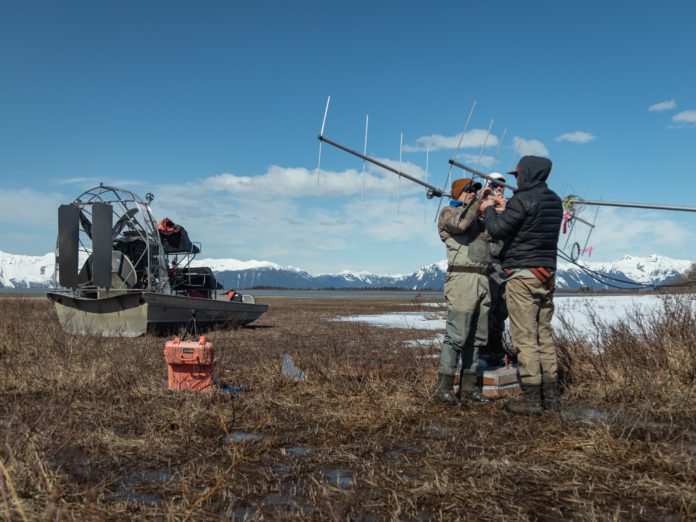
For thousands of years, the Copper River Delta’s rich mudflats, teeming with insects, aquatic invertebrates, and mollusks, have attracted millions of shorebirds each spring.
Yet even after decades of research into shorebird migration, there is still more to discover about the lifecycles and migratory connectivity of the birds that visit the Delta.
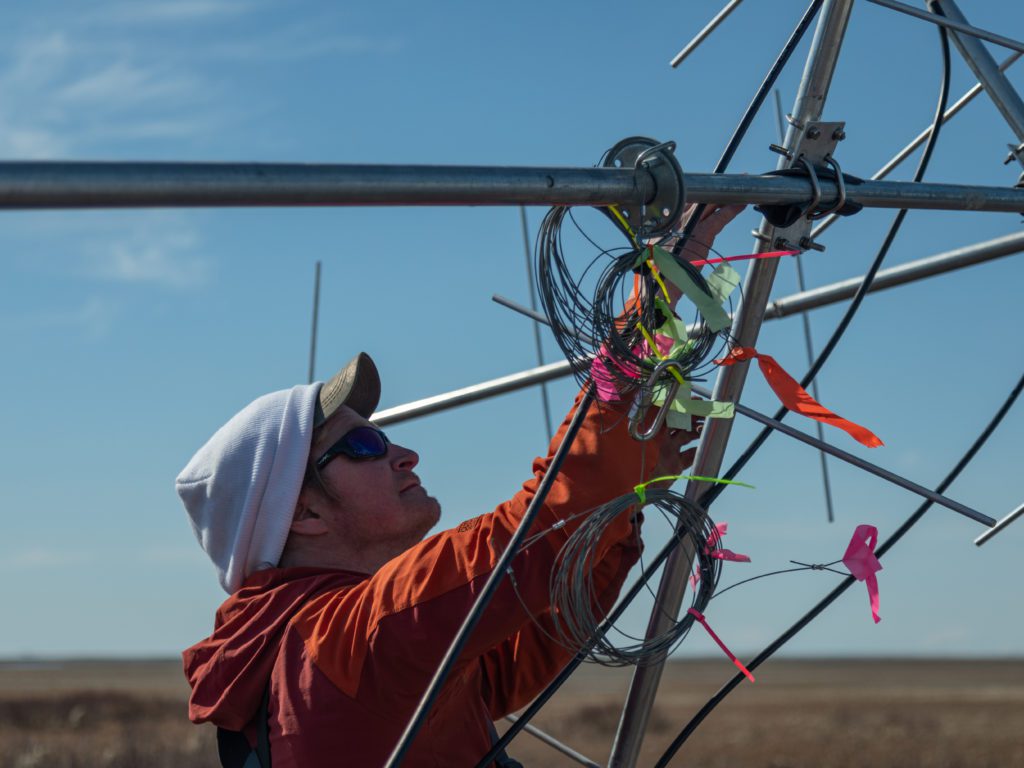
Photo courtesy of Eden McCall
As part of an international research effort to gather data about shorebird migration that can guide future conservation efforts, Cordova Ranger District staff installed two radio towers on the Copper River Delta this month to track tagged birds during spring migration.
The solar-powered tower will automatically record signals from radio transmitters on tagged shorebirds as they stop over on the Copper River Delta. U. S. Forest Service staff will retrieve the detection data and upload it to a shared research network called Motus.
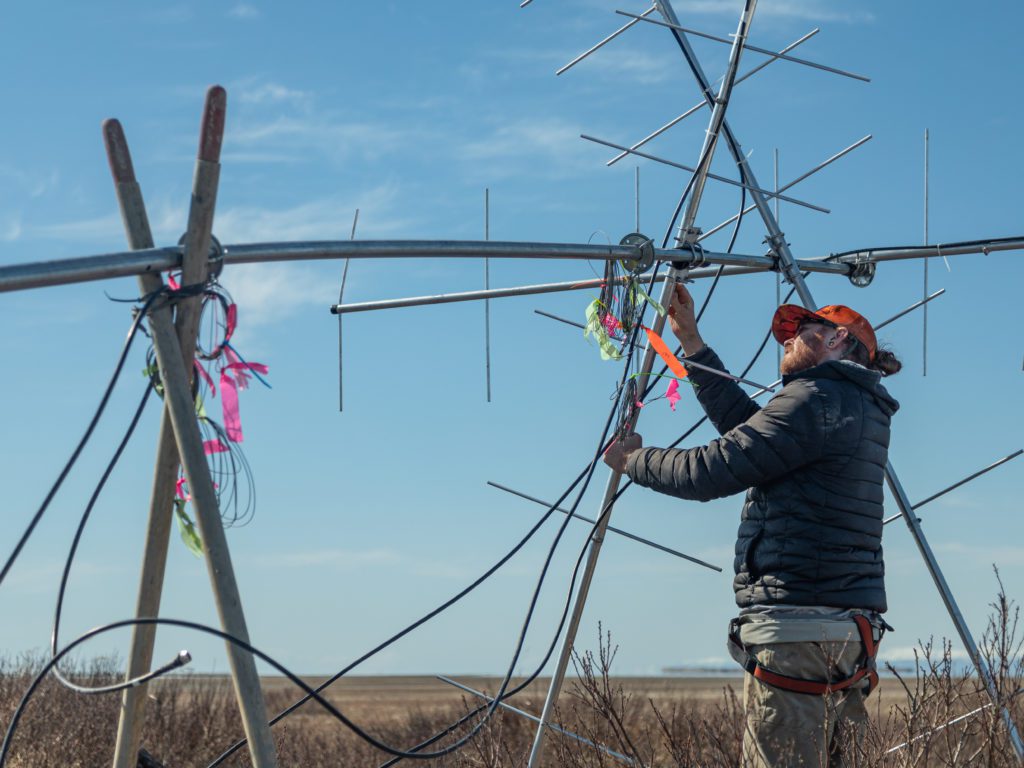
Photo courtesy of Eden McCall
The Motus Wildlife Tracking System is an international collaboration between partners and research organizations with more than 1,300 towers across over 30 countries. Combining
detection data from these dispersed towers provides new insights into animals’ migratory movements.
“Motus tags have been around for a long time on the Atlantic Coast, but it’s new on the Pacific Coast,” said Erin Cooper, the USFS wildlife biologist who has worked for over two decades promoting conservation of migratory birds and their habitats throughout the Pacific Flyway. “Motus provides another way we can determine migratory connectivity as more birds are tagged and tracked.”
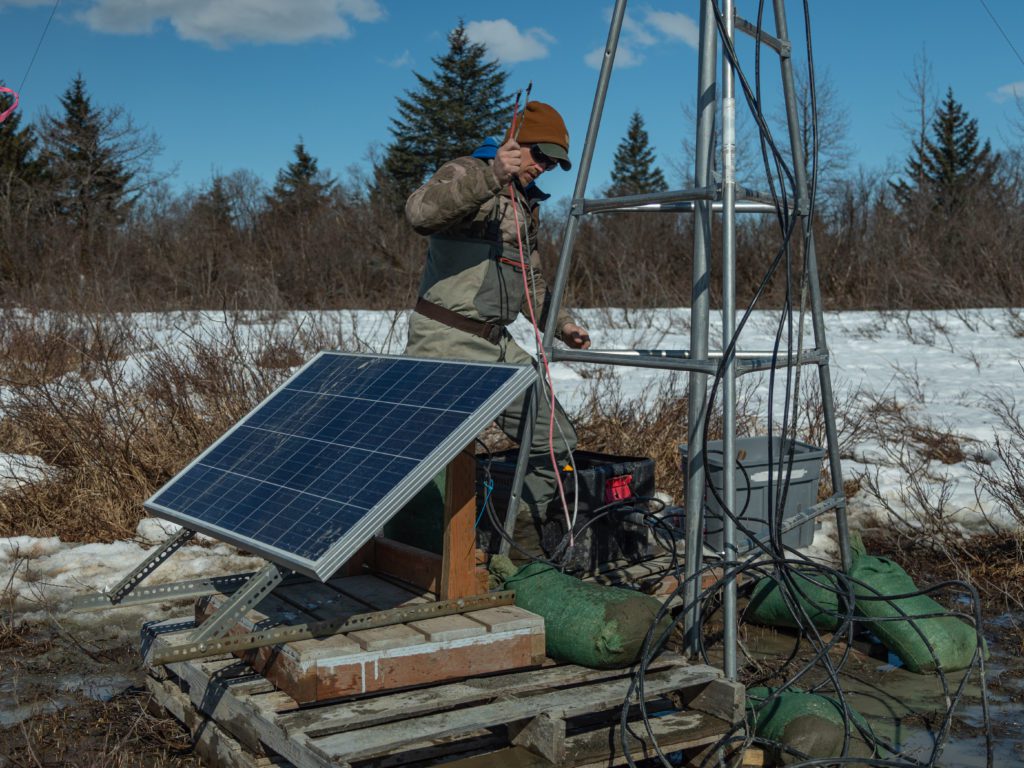
Photo courtesy of Eden McCall
This year, tags have been deployed by agencies and researchers across the Pacific Flyway on western and least sandpipers, long-billed dowitchers, semipalmated plovers, marbled godwits, dunlins and red knots.
The Cordova Ranger District will manage two Motus towers this spring on the Chugach National Forest. The second tower, funded by The Nature Conservancy, is located on Little Egg Island. As the only two towers in Alaska, they will provide data on when species like western sandpipers, dunlins and long-billed dowitchers stopover on their journey farther northward to breed.
[View current and prior years’ data on tagged shorebirds migrating through the Copper River Delta from the Alaganik tower and Little Egg Island tower]
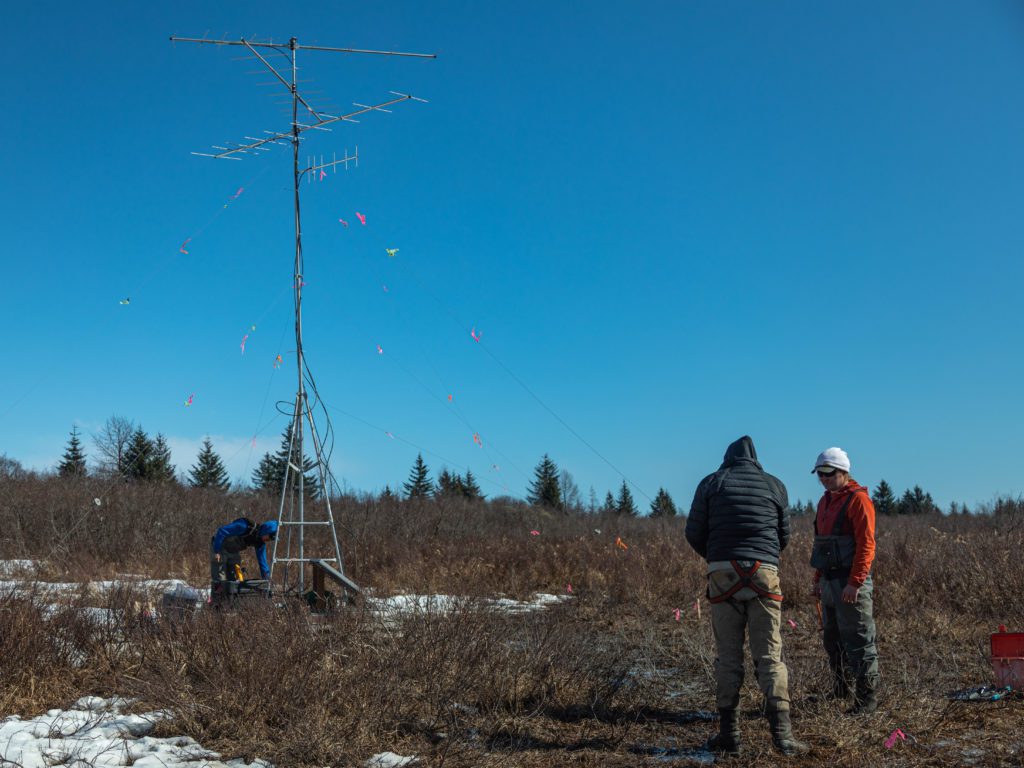
Photo courtesy of Eden McCall
Tagged shorebirds are already being detected by the second tower after being detected by towers near Sacramento, California and along the Pacific Coast of Washington and Canada.
There are nine other towers along the Pacific Flyway that are part of the Pacific Shorebird Project. These towers, located on Vancouver Island and Graham Island, are managed by Environment and Climate Change Canada (ECCC). The ECCC also provided equipment and support to establish both Motus towers deployed on the Chugach.
In addition to participating in international shorebird monitoring and conservation efforts, the Cordova Ranger District is also participating in an Alaska Department of Fish and Game research project on Red Knots in Controller Bay this spring that will increase information about the importance of this stopover site for the species.
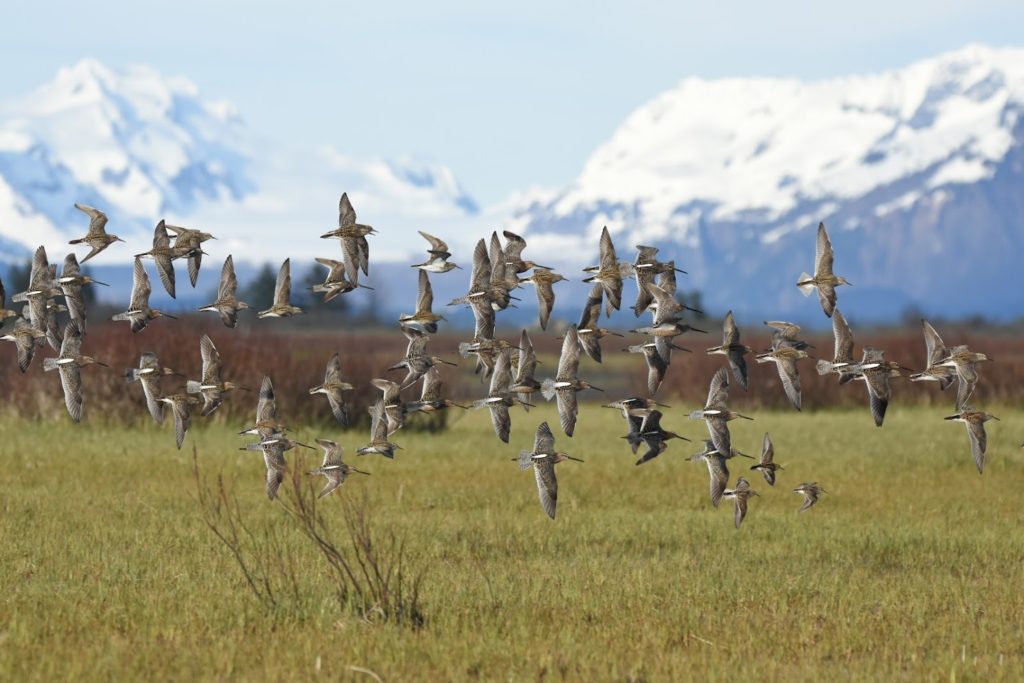
Photo courtesy of Evan Ward
While there is still much to discover about the migration patterns of migratory shorebirds, the Copper River Delta, a mosaic of freshwater wetlands, river systems, estuaries, mudflats and barrier islands across more than 700,000 acres of southcentral Alaska, is known to be a site of Hemispheric Importance by the Western Hemisphere Shorebird Reserve Network, an international initiative of scientists and organizations partnering to identify and protect key shorebird habitats across the Americas.
To celebrate and raise awareness about the important habitat provided by the Delta and the species that rely on it, the USFS started the annual Copper River Delta Shorebird Festival in 1990. Since then, locals and visitors from across the Pacific Flyway have gathered to watch, learn about, and discuss shorebirds during annual migration each spring.
The USFS also brings conservationists and community leaders from across the Pacific Flyway to visit and speak during the festival.
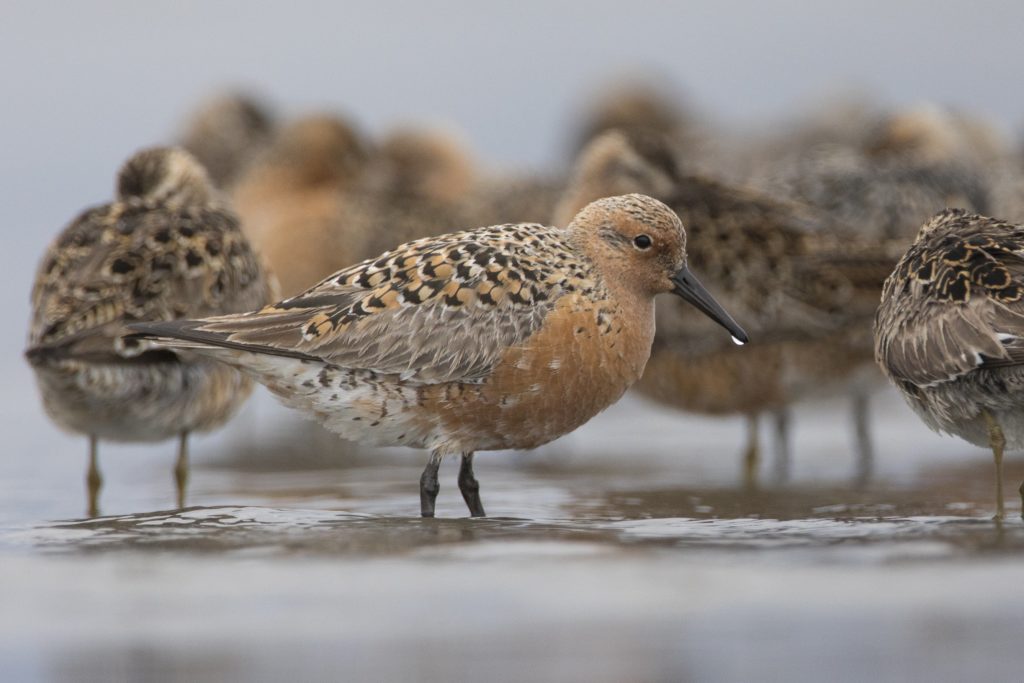
“We like to bring biologists up to see the connection the Copper River Delta has with the places they work, and the initiative itself is about connecting with each other,” said Jim Chu, USFS National Partnership coordinator and International programs liaison.
This year, Fernando Angulo Pratolongo, a bird conservationist from Peru, and Ana Agreda, a wildlife biologist from Ecuador, are visiting and presenting at the festival. They both work to conserve important stopover sites and also host festivals to educate communities in their countries.
“Internationally, we know the Copper River Delta is important, but it’s only as important as all these other sites that make up the network,” said Chu.
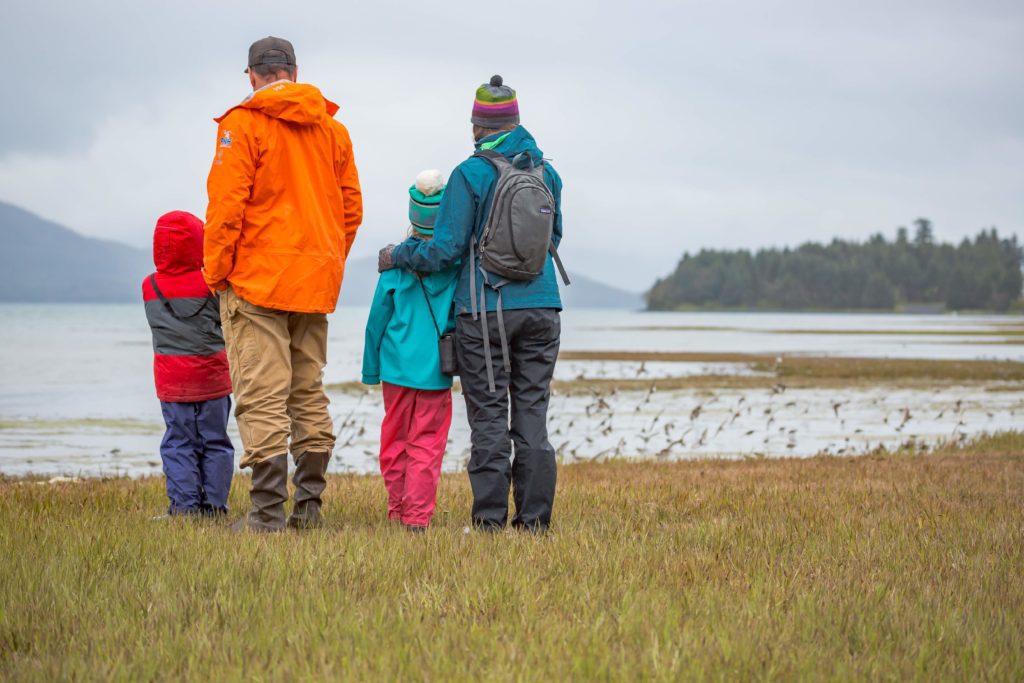
During the festival from May 5-8 this year, USFS staff will guide birders at Alaganik Recreation Site and Hartney Bay to learn more about migratory shorebirds and waterfowl, and Wildlife Biologist Erin Cooper will present about the important ecology of the Copper River Delta on Saturday, May 7, from 6:20 p.m. to 6:50 p.m. in the Cordova Center.
“This is a festival for everybody,” said Erin Cooper. “If you like being outside, you enjoy nature, and you want to see a spectacle of nature, Cordova and the Shorebird Festival is a great fit.”
Throughout the week, flocks of shorebirds can be spotted at Alaganik Slough, Odiak Slough, Three Mile Bay and Hartney Bay, and, with the addition of Motus towers now setup on the Delta, the public can view the migratory path of tagged shorebirds that stopover throughout the spring.
Eden McCall is a USFS Media Intern














